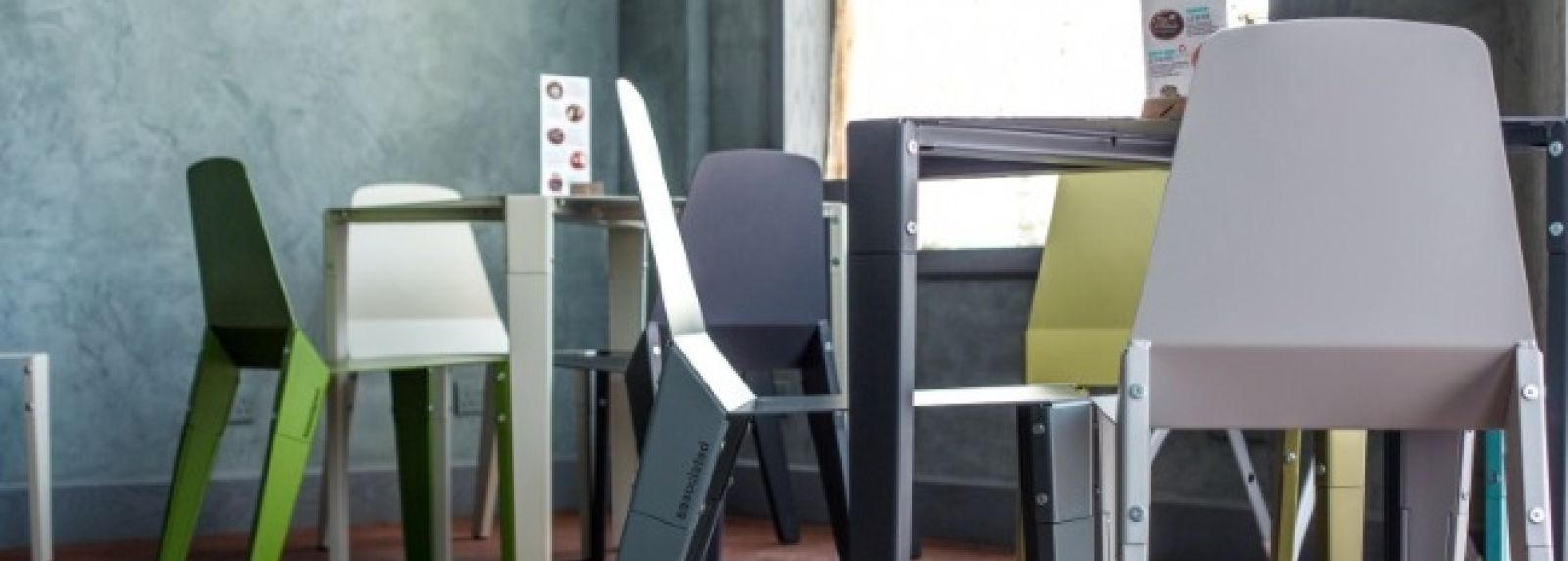
successful design to maintain balance of simplicity and complexity
 Jacob Nitz is an American-born furniture and product designer. He received his bachelors of science in industrial design from the University of Cincinnati's Design, Architecture, Art, and Planning Programme in 2010. Nitz moved to Chicago in June 2011 to work with the prestigious design studio MNML where he was appointed senior designer. He relocated to Eindhoven in June 2015 to build Jacob Nitz Studio and to work with new clients throughout Europe and abroad.
Jacob Nitz is an American-born furniture and product designer. He received his bachelors of science in industrial design from the University of Cincinnati's Design, Architecture, Art, and Planning Programme in 2010. Nitz moved to Chicago in June 2011 to work with the prestigious design studio MNML where he was appointed senior designer. He relocated to Eindhoven in June 2015 to build Jacob Nitz Studio and to work with new clients throughout Europe and abroad.
Who or what has inspired you to become a designer?
“Growing up, I always gravitated to ‘arts and science’. I loved to draw, build things, take products apart to see what was inside and put them back together. This was at an early age where I really didn’t know what industrial or product design was about, but I must have inherently been attracted to it. When I was 13 years old, I was flying to Miami with my father and I bought a Wallpaper* Magazine from a news kiosk. Looking through the magazine on the flight, I discovered the functional beauty of furniture design. For me, it was the perfect culmination of product design: beautiful, functional objects that took influence from our surroundings, the thoughtful use of materials, and a touch of fashion. My high school art teacher recognised my passion for furniture, and he is the one that ultimately told me about industrial design, and that is what I chose to pursue in university.”
How would you describe the signature of your furniture designs, what makes them special and what are your latest innovative developments?
“I think all of my furniture designs have a similar attitude about them. I try and keep things simple, evoke something memorable, yet still reflect some sort of unique quality. For my ‘Siren’ chair designed for Bogaerts Label, we wanted to have a seat that could be attached to the frame with no visible connections. We worked on a clever, unseen solution with the seating and upholstery factory to achieve this. We are currently working on outdoor and armchair versions of the Siren chair, and there are some new projects on the horizon that also promise to be innovative.”
Do you also design other products?
“I come from an education of traditional industrial design where I was taught to be able to approach all industries of product design. For over four years, I was a product designer at an award-winning consultancy in Chicago called MINIMAL. There I worked with a range of clients across many industries encompassing consumer electronics, housewares, medical, mobile device accessories, and, of course, furniture.”
Your designs are defined by their simplicity Is that what makes them special?
“When designing, I try and keep an overall balance. Something that is seemingly simple can also be quite complex. In my work, I would say that a ‘special’ or ‘successful’ design needs to maintain this balance of simplicity and complexity but also function well and be aesthetically pleasing.”
What materials do you use and should they be sustainable?
“I like to use a mixture of materials, but with my furniture, I have mostly been working a lot with metal, wood, and textiles. My design ethos isn’t one that I would call ‘sustainable-driven’, but I definitely think about the way something is assembled, where the materials come from, and if it is a design that can stand the test of time. If you design something well, that is sustainable to me.”
You use tapes and adhesives typically in the prototyping/model-making process. How?
“After a promising concept sketch or idea is generated, I like to jump quickly into what I call 3D sketching. I make a lot of scale models out of cardboard, foam-core, and paper. In this phase of the design process, we can often learn more about the construction or a new way of making something. Tapes and adhesives serve an important part of this process. They are quick solutions when I’m in this iterative process and highly effective at this early stage of designing.”
What will be your next challenge?
“Having just relocated a few months ago to Eindhoven, the Netherlands (from Chicago) I am still in a phase of transition which has been a challenge personally and professionally. I am adjusting to life here and slowly building new clientele. I have some relationships from existing companies that I design for and will have some exciting new work coming out soon with Dutch furniture producer Bogaerts Label.”
How do you envisage the future of design?
“That is a hard one to predict. However, I do see the future of design being much more material and process driven. This may mean exploring cross-industry collaboration or borrowing manufacturing processes from another market such as automotive, fashion, or even traditional craft. There is also the ever-popular expansion and affordability of 3D printing and rapid prototyping bringing us almost immediate results to streamline how we design or even produce the final product. Holistically design is becoming more and more recognised as an important part of most industries. I’m very excited to be a part of what the future brings!”
More information: www.jacobnitz.com
 |
 |
 |
| @Amiritz Kuwait | @HYSA | @Siren |

